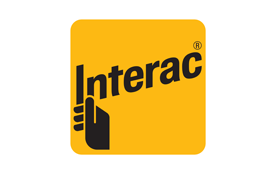bet surface area calculation example【rummy poker king】
In the world of online entertainment, particularly in games like Rummy Poker King, understanding the concept of bet surface area can be crucial for strategic gameplay. This article will delve into what bet surface area is, why it matters, and provide a practical example to illustrate its calculation. What is Bet Surface Area? Bet surface area refers to the total potential betting options available to a player within a game. It encompasses all possible bets that can be made, including different stakes, game variations, and side bets.
- Cash King PalaceShow more
- Lucky Ace PalaceShow more
- Starlight Betting LoungeShow more
- Spin Palace CasinoShow more
- Silver Fox SlotsShow more
- Golden Spin CasinoShow more
- Royal Fortune GamingShow more
- Lucky Ace CasinoShow more
- Diamond Crown CasinoShow more
- Victory Slots ResortShow more
bet surface area calculation example【rummy poker king】
In the world of online entertainment, particularly in games like Rummy Poker King, understanding the concept of bet surface area can be crucial for strategic gameplay. This article will delve into what bet surface area is, why it matters, and provide a practical example to illustrate its calculation.
What is Bet Surface Area?
Bet surface area refers to the total potential betting options available to a player within a game. It encompasses all possible bets that can be made, including different stakes, game variations, and side bets. In games like Rummy Poker King, where strategic betting is key, understanding the bet surface area can help players make more informed decisions.
Why Does Bet Surface Area Matter?
- Strategic Planning: Knowing the bet surface area allows players to plan their strategies more effectively. They can anticipate the range of bets available and adjust their gameplay accordingly.
- Risk Management: Understanding the total betting options helps in managing risks. Players can assess the potential losses and gains across different betting scenarios.
- Enhanced Decision-Making: With a clear view of the bet surface area, players can make more calculated decisions, avoiding impulsive bets that could lead to losses.
Calculating Bet Surface Area: A Practical Example
Let’s consider a hypothetical scenario in Rummy Poker King to illustrate how to calculate the bet surface area.
Step-by-Step Calculation
Identify All Possible Bets:
- Main Game Bets: These are the primary bets placed on the outcome of the game.
- Example: Bet on winning hand, losing hand, specific card combinations.
- Side Bets: Additional bets that can be placed alongside the main game bets.
- Example: Bet on the first card drawn, specific sequences, or bonus rounds.
- Main Game Bets: These are the primary bets placed on the outcome of the game.
Determine the Number of Each Type of Bet:
- Main Game Bets: Assume there are 5 different main game bets.
- Side Bets: Assume there are 3 different side bets.
Calculate the Total Bet Surface Area:
- The total bet surface area is the sum of all possible bets.
- Formula: Total Bet Surface Area = Number of Main Game Bets + Number of Side Bets
- Example Calculation: Total Bet Surface Area = 5 (Main Game Bets) + 3 (Side Bets) = 8
Example Scenario in Rummy Poker King
Imagine you are playing Rummy Poker King and you want to calculate the bet surface area for a particular round. Here’s how you might do it:
Main Game Bets:
- Bet on winning hand: 3 options (low, medium, high stakes)
- Bet on losing hand: 2 options (low, medium stakes)
- Bet on specific card combinations: 5 options (different combinations)
Side Bets:
- Bet on the first card drawn: 2 options (high, low)
- Bet on specific sequences: 3 options (different sequences)
- Bet on bonus rounds: 1 option
Total Bet Surface Area:
- Main Game Bets: 3 (winning hand) + 2 (losing hand) + 5 (card combinations) = 10
- Side Bets: 2 (first card) + 3 (sequences) + 1 (bonus rounds) = 6
- Total Bet Surface Area = 10 (Main Game Bets) + 6 (Side Bets) = 16
Understanding and calculating the bet surface area in games like Rummy Poker King can significantly enhance your strategic gameplay. By knowing the total potential betting options, you can make more informed decisions, manage risks better, and ultimately improve your chances of winning. Whether you’re a seasoned player or a newcomer, this concept is invaluable for mastering the game.
american roulette wheel and table layout
Roulette is a classic casino game that has captivated players for centuries. Among its various versions, American Roulette stands out due to its unique wheel and table layout. Understanding these elements is crucial for both novice and experienced players. This article delves into the intricacies of the American Roulette wheel and table layout.
The American Roulette Wheel
The American Roulette wheel is distinct from its European counterpart due to the presence of an additional green pocket, the double zero (00). Here’s a breakdown of its components:
Wheel Structure
- 38 Pockets: The wheel contains 38 pockets, numbered from 0 to 36, plus an additional 00.
- Red and Black Pockets: Numbers 1 to 36 are evenly distributed in red and black colors.
- Green Pockets: The 0 and 00 are green, setting American Roulette apart from European Roulette, which only has a single green zero.
Number Distribution
- Alternating Colors: The numbers are arranged in a specific sequence to ensure that red and black pockets alternate.
- Random Distribution: The numbers are not in numerical order but are arranged to balance high and low numbers around the wheel.
The American Roulette Table Layout
The table layout is designed to facilitate betting and is divided into several sections. Here’s a detailed look at its structure:
Main Betting Area
Inside Bets: This area includes individual numbers and small groups of numbers.
- Straight Up: Bet on a single number.
- Split Bet: Bet on two adjacent numbers.
- Street Bet: Bet on three numbers in a horizontal line.
- Corner Bet: Bet on four numbers that form a square.
- Five-Number Bet: Bet on 0, 00, 1, 2, and 3 (unique to American Roulette).
- Line Bet: Bet on six numbers in two adjacent rows.
Outside Bets: This area includes larger groups of numbers and offers lower payouts but higher chances of winning.
- Column Bet: Bet on all 12 numbers in one of the three vertical columns.
- Dozen Bet: Bet on a group of 12 numbers (1-12, 13-24, 25-36).
- Red or Black: Bet on whether the winning number will be red or black.
- Odd or Even: Bet on whether the winning number will be odd or even.
- High or Low: Bet on whether the winning number will be in the range of 1-18 (low) or 19-36 (high).
Special Areas
- Wheel Area: The wheel is placed at one end of the table, where the croupier spins the ball.
- Croupier Area: The area where the croupier operates, including the betting layout and the wheel.
- Player Area: Each player has a designated area to place their chips and keep track of their bets.
Betting Process
- Place Bets: Players place their chips on the desired betting areas.
- Spin the Wheel: The croupier spins the wheel and throws the ball in the opposite direction.
- Wait for the Outcome: Players wait for the ball to land in one of the pockets.
- Payouts: The croupier pays out winners according to the bet type and the odds.
Understanding the American Roulette wheel and table layout is essential for any player looking to master this classic casino game. The unique double zero pocket and the structured betting layout provide a thrilling experience that combines strategy and chance. Whether you’re a seasoned player or a newcomer, knowing these elements will enhance your gameplay and enjoyment.
european roulette layout
European Roulette is one of the most popular casino games worldwide, known for its simplicity and exciting gameplay. The game’s layout is a crucial aspect that players need to understand to make informed betting decisions. This article will delve into the details of the European Roulette layout, explaining its components and how they function.
The Roulette Wheel
The European Roulette wheel is divided into 37 pockets, numbered from 0 to 36. The numbers are arranged in a specific sequence, alternating between red and black, with the green zero (0) being the only exception. The wheel is designed to ensure that the ball has an equal chance of landing in any pocket.
Key Features of the Wheel:
- 37 Pockets: Numbered 0 to 36.
- Alternating Colors: Red and black numbers alternate.
- Green Zero: The only green pocket, numbered 0.
The Roulette Table Layout
The table layout is where players place their bets. It mirrors the wheel’s numbers and includes additional betting options. The layout is divided into two main sections: the inside and outside betting areas.
Inside Betting Area
The inside betting area consists of the numbers 1 to 36 and the zero (0). Players can place various types of bets within this area.
Types of Inside Bets:
- Straight Up: Bet on a single number.
- Split: Bet on two adjacent numbers.
- Street: Bet on three numbers in a horizontal line.
- Corner: Bet on four numbers that form a square.
- Six Line: Bet on six numbers in two adjacent horizontal lines.
Outside Betting Area
The outside betting area offers broader betting options, covering larger groups of numbers. These bets typically have lower payouts but higher chances of winning.
Types of Outside Bets:
- Column: Bet on one of the three vertical columns of 12 numbers.
- Dozen: Bet on one of the three groups (1-12, 13-24, 25-36).
- Red or Black: Bet on whether the winning number will be red or black.
- Odd or Even: Bet on whether the winning number will be odd or even.
- High or Low: Bet on whether the winning number will be in the range of 1-18 (low) or 19-36 (high).
Understanding the Payouts
Each type of bet in European Roulette has a specific payout structure, which is determined by the probability of the bet winning.
Payout Table:
- Straight Up: 35:1
- Split: 17:1
- Street: 11:1
- Corner: 8:1
- Six Line: 5:1
- Column/Dozen: 2:1
- Red/Black, Odd/Even, High/Low: 1:1
Tips for Playing European Roulette
- Understand the Odds: Familiarize yourself with the odds and payouts for each type of bet.
- Manage Your Bankroll: Set a budget and stick to it to avoid excessive losses.
- Use Betting Strategies: Consider using strategies like the Martingale or Fibonacci systems to manage your bets.
- Observe the Game: Watch a few rounds to get a feel for the game and the dealer’s tendencies.
The European Roulette layout is a fascinating and intricate part of the game that offers a variety of betting options. By understanding the layout and the different types of bets, players can enhance their gaming experience and make more informed decisions. Whether you’re a beginner or an experienced player, mastering the layout is key to enjoying and potentially winning at European Roulette.
roulette table
Roulette is one of the most iconic casino games, known for its simplicity and thrilling gameplay. At the heart of this game is the roulette table, a meticulously designed layout that serves as the battleground for players and the house. Here’s a detailed look at the components and mechanics of a roulette table.
Table Layout
The roulette table is divided into two main sections: the betting area and the wheel area.
1. Betting Area
The betting area is where players place their chips to make various types of bets. It is typically covered with a green cloth and features several numbered and colored sections.
Inside Bets: These are bets placed on specific numbers or small groups of numbers.
- Straight Up: A bet on a single number.
- Split: A bet on two adjacent numbers.
- Street: A bet on a row of three numbers.
- Corner: A bet on four numbers that form a square.
- Six Line: A bet on two adjacent rows, covering six numbers.
Outside Bets: These are bets placed on larger groups of numbers, offering lower payouts but higher chances of winning.
- Column: A bet on one of the three vertical columns.
- Dozen: A bet on one of the three groups of twelve numbers.
- Red/Black: A bet on whether the number will be red or black.
- Odd/Even: A bet on whether the number will be odd or even.
- High/Low: A bet on whether the number will be between 1-18 (low) or 19-36 (high).
2. Wheel Area
The wheel area is where the roulette wheel is located. The wheel is divided into 37 or 38 pockets, depending on whether it’s a European (single zero) or American (double zero) wheel.
- European Wheel: 37 pockets (0-36).
- American Wheel: 38 pockets (0, 00, 1-36).
Types of Roulette Tables
There are two main types of roulette tables based on the wheel they use:
1. European Roulette Table
- Single Zero Wheel: Offers better odds for players due to the absence of the double zero.
- House Edge: 2.7%.
2. American Roulette Table
- Double Zero Wheel: Includes an additional pocket (00), which increases the house edge.
- House Edge: 5.26%.
Betting Mechanics
Understanding how bets are placed and paid out is crucial for any roulette player.
1. Placing Bets
- Players place their chips on the desired betting area.
- Bets can be placed until the dealer announces “no more bets.”
2. Payouts
Inside Bets: Higher payouts due to lower probabilities.
- Straight Up: 35:1
- Split: 17:1
- Street: 11:1
- Corner: 8:1
- Six Line: 5:1
Outside Bets: Lower payouts but higher chances of winning.
- Column/Dozen: 2:1
- Red/Black, Odd/Even, High/Low: 1:1
Etiquette and Rules
Playing roulette involves following certain etiquette and rules to ensure a smooth and enjoyable experience.
1. Etiquette
- Respect the Dealer: Always be polite and respectful to the dealer.
- Wait for the Dealer: Do not place bets while the wheel is spinning.
- Keep Chips Visible: Ensure your chips are clearly visible and not mixed with others.
2. Rules
- No More Bets: Once the dealer announces “no more bets,” no additional bets can be placed.
- Winning Bets: The dealer will place a marker on the winning number and pay out winning bets.
- Losing Bets: Losing bets are collected by the dealer.
The roulette table is a fascinating and intricate part of the casino experience. Understanding its layout, types, betting mechanics, and etiquette can significantly enhance your gameplay. Whether you’re a seasoned player or a newcomer, the roulette table offers excitement and thrill that keeps players coming back for more.
Source
- bet surface area calculation example【rummy poker king】
- sky bet minimum bet
- sky bet minimum bet
- sky bet minimum bet
- sky bet minimum bet
- sky bet minimum bet
Frequently Questions
How do you calculate the bet surface area in rummy poker king?
In Rummy Poker King, calculating the bet surface area involves understanding the game's layout and the spaces available for placing bets. Typically, the bet surface area is the total number of betting positions multiplied by the area each position occupies. For example, if there are 10 betting positions and each occupies 1 square inch, the bet surface area is 10 square inches. This calculation helps in managing the game's dynamics and ensuring fair play. Always refer to the game's specific rules or guidelines for precise measurements and betting strategies.
How important is bet surface area calculation in rummy poker king?
In Rummy Poker King, calculating the bet surface area is crucial for strategic gameplay. This involves assessing the potential risks and rewards of each bet, which can significantly impact your chances of winning. By understanding the bet surface area, players can make informed decisions, manage their bankroll effectively, and optimize their betting strategy. This calculation helps in balancing aggression with caution, ensuring a more controlled and profitable gaming experience. Ultimately, mastering bet surface area calculation can elevate your game, giving you a competitive edge over opponents.
What are the common errors in bet surface area calculation for rummy poker king?
Common errors in bet surface area calculation for Rummy Poker King include incorrect estimation of card distribution, overlooking the impact of jokers, and failing to account for the strategic placement of high-value cards. Players often miscalculate the probability of drawing specific cards, leading to misguided betting decisions. Additionally, not considering the opponent's potential hand can result in overconfidence or excessive caution. To avoid these pitfalls, it's crucial to refine probability skills, understand the game's dynamics, and practice strategic thinking to enhance betting accuracy.
What methods are used for calculating bet surface area in rummy poker king?
Calculating the bet surface area in Rummy Poker King involves assessing the potential outcomes of your hand and the opponent's possible hands. This can be done by considering the number of cards left in the deck, the probability of drawing certain cards, and the strategic placement of bets based on these probabilities. Key methods include using combinatorial analysis to determine the likelihood of different hand combinations, and employing risk management strategies to balance potential gains against the risks of loss. Understanding these methods can enhance your decision-making and improve your overall gameplay.
Can you provide a step-by-step guide on bet surface area calculation for rummy poker king?
Calculating the surface area for a 'Rummy Poker King' game involves simple geometry. First, measure the dimensions of the game pieces, typically rectangular cards. Multiply the length by the width of one card to get its surface area. If the game includes multiple cards, multiply the single card's surface area by the total number of cards. For example, if each card is 6 cm by 9 cm, its surface area is 54 cm². If there are 52 cards, the total surface area is 52 * 54 = 2,808 cm². This method ensures an accurate calculation for any card game.




















